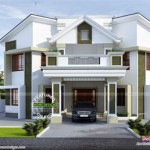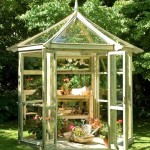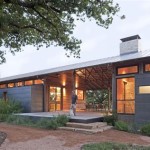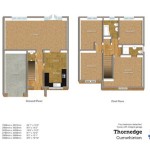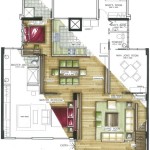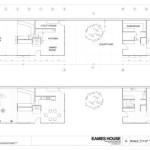Tiny House Gooseneck Trailer Plans: A Comprehensive Guide
Embarking on the journey of building a tiny house is a dream for many. The allure of a smaller footprint and an eco-conscious lifestyle is undeniable. While the structure of the house itself is an essential part of the process, the foundation upon which it sits is arguably just as important. This is where the gooseneck trailer comes in, offering a unique and versatile platform for your tiny house. This article delves into the world of tiny house gooseneck trailer plans, providing valuable insights and guidance for those considering this option.
Understanding Gooseneck Trailers
Gooseneck trailers are a type of heavy-duty trailer designed for hauling large or heavy loads. They are distinguished by their unique coupling mechanism, where a long, vertical "neck" extends from the trailer bed and connects to a hitch mounted on the bed of a pickup truck. This design offers several advantages over traditional bumper-pull trailers, including:
- Enhanced Stability: The gooseneck design provides a lower center of gravity, resulting in superior stability and less sway, especially when hauling heavy loads.
- Increased Payload Capacity: Gooseneck trailers are typically rated for higher weight capacities than bumper-pull trailers, allowing you to carry more cargo or build a larger tiny house.
- Improved Maneuverability: The gooseneck hitch system allows for tighter turning radius, facilitating smoother maneuvering in tight spaces.
In the context of tiny house building, gooseneck trailers offer distinct benefits. Their substantial weight capacity and robust construction make them ideal for supporting the weight of a tiny house. The gooseneck design also provides ample space beneath the house for storage or even a covered living area.
The Advantages of Building Your Own Tiny House Gooseneck Trailer
While purchasing a pre-built gooseneck trailer is an option, many tiny home enthusiasts choose to build their own. Building your own trailer allows for greater customization and cost-effectiveness.
- Tailored Design: You can design the trailer to perfectly match your tiny house plans, including dimensions, weight capacity, and any specific features you require.
- Cost Savings: Building your own trailer can be significantly cheaper than buying a pre-built one, especially if you have some construction skills or can find help from friends or family.
- Personal Satisfaction: Building your own trailer is a rewarding experience, giving you a sense of accomplishment and ownership.
However, it's crucial to understand that building a gooseneck trailer is a challenging project that requires specific skills and knowledge. It's essential to consult with professionals, obtain the necessary permits, and ensure safety precautions are taken throughout the process.
Essential Considerations When Designing Tiny House Gooseneck Trailer Plans
Designing a gooseneck trailer for your tiny house requires careful planning and consideration. Here are some essential aspects to focus on:
1. Size and Weight Capacity
- Determine the overall size and weight of your tiny house to ensure the trailer can adequately support it.
- Consider the maximum payload capacity of your towing vehicle to ensure compatibility.
- Factor in the weight of any additional features, such as appliances, furniture, and personal belongings.
2. Frame and Construction
- Choose durable and robust materials for the frame, such as steel or aluminum, to withstand the load and road conditions.
- Select a suitable type of trailer axle and suspension system to ensure smooth towing and stability.
- Consider the use of treated lumber for the trailer deck to prevent rot and moisture damage.
3. Gooseneck Hitch and Coupling
- Ensure the gooseneck hitch is properly designed and rated for the weight of your tiny house.
- Choose a hitch with adjustable height to fine-tune the trailer's ride height.
- Consider a safety chain system for added security and prevent the trailer from detaching.
4. Electrical and Plumbing
- Plan for electrical wiring and plumbing connections to integrate with your tiny house systems.
- Consider using a wiring harness specifically designed for gooseneck trailers for safe and reliable electrical connections.
- Install appropriate plumbing fixtures and connections for water and waste disposal.
5. Safety and Regulations
- Comply with all local and state regulations regarding trailer construction, safety, and licensing.
- Ensure the trailer meets safety standards for brakes, lights, and reflective materials.
- Consider adding safety features like wheel chocks, breakaway brakes, and a tire pressure monitoring system.
By carefully considering these factors, you can design a gooseneck trailer that is safe, reliable, and perfectly tailored to your tiny house needs.

Ever Thought Of A Gooseneck Tiny House Design Trailer Layout Floor Plans

Guide To Building A Gooseneck Tiny House And Fifth Wheel Homes The Life

Guide To Building A Gooseneck Tiny House And Fifth Wheel Homes The Life

The Updated Layout Tiny House Floor Plans

Gooseneck Tiny Homes Living

Guide To Building A Gooseneck Tiny House And Fifth Wheel Homes The Life Trailer Layout

Guide To Building A Gooseneck Tiny House And Fifth Wheel Homes The Life

Custom Plans Elevations Now Available Tiny House Basics

Tiny House Floor Plans 32 Long Home On Wheels Design

Tiny House Gooseneck Trailer Home Builders

